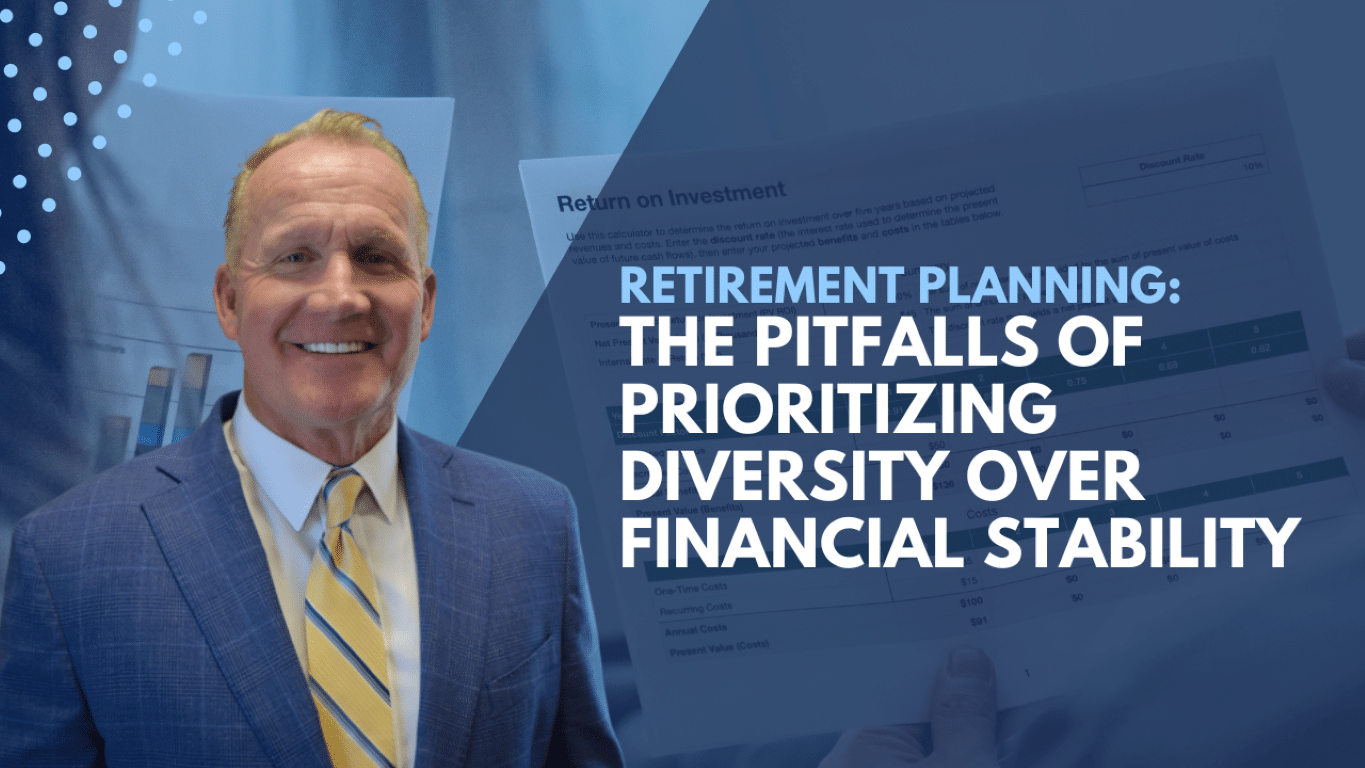Retirement Planning:
The Pitfalls of Prioritizing Diversity Over Financial Stability
It has been said that if you have nothing nice to say, you need to say nothing at all. Well, that may have been the beginning of the culture we’re in today, where everyone should get a trophy and we shouldn’t hurt anyone’s feelings. The actual fact is that particular saying came from a cartoon character called Thumper from the Disney movie Bambi. That should tell you all you need to know about how ridiculous it is.
Hello, Dave Duley here, a 40-year veteran of the financial markets and CEO of a registered investment advisory firm, bringing you great information on retirement planning and walking you through the do’s and don’ts in or leading up to retirement. Today, I’m not going to be nice; I’d rather speak frankly about why so-called diversification in your portfolio is foolish and for those too lazy to do their homework.
Over the last five to six months, the sheer number of new clients coming into our offices with portfolios consisting of 40 to 50 mutual funds or literally 30 to 50 stock positions is absolutely crazy. These families were told to take the approach to diversify to spread risk amongst a large number of companies and therefore protect against major moves in the markets. This myth was sold to the American investor decades ago with the inception of the first mutual funds in the early 20th century.
The fact is, for a hundred years now, mutual funds have had high fees, poor tax efficiency, diluted returns, and consistently underperformed even basic indexes, not to mention no way of protecting those positions in fast-moving markets, which is an outdated concept. Warren Buffett has said for years and constantly beats the drum to own individual companies and stocks. The fact that you become a part-owner of that company drives you to do the homework needed to assure yourself you’re making a great decision. That’s right; your advisor has to do homework, not just shove you an index or mutual funds and take the rest of the day off.
What’s remarkable is the fact that they charge you an advisory fee on an annual basis, then have your money sent to fund managers who charge you additional fees, and you sit back and let it happen. Warren Buffett is the greatest investor of our life, five times invested in very few companies based on their underlying performance and the risk of whether management can execute efficiently. He then focuses on buying those companies at a discount to their current stock price. Again, the stakes work, patience, and a deep dive into the individual companies.
But he has proven over and over again that these companies will outperform in the long term and therefore greatly reduce risk. On the other hand, betting on every horse in the race will reduce risk, and it will also guarantee that your performance will be mediocre at best and terrible at worst. But a major way to secure those individual positions for major swings is options, and that is also a strategy he employs to protect from giving back those major gains he has accumulated over the years.
Warren’s partner, Charlie Munger, a colorful character and 99 years old, not long ago was asked if he could own one company today for the next 30 years, what would it be? He responded quickly with Costco. When he was asked why he would own Costco, he responded to the question: have you ever been to Costco? Did you notice the parking lot no matter what time of day that you went? Do you need a subscription to get into Costco? Do you go in with the idea to buy a hundred dollars worth of things and walk out with five hundred dollars worth of stuff? Was your experience fast, efficient, and fun? He said that’s why he’s bullish on Costco.
In his earliest years, Warren Buffett put over 50 percent of his net worth in one company, Geico.
Two months ago, we purchased Meta and Nvidia at a huge discount. These companies had lost over 60 percent of their stock value in the past 12 months, even though their revenue had continued to increase quarter over quarter. 45 days later, we’ve seen a 50 percent return and it’s still growing on those particular companies. We now have these positions covered with options, to prevent giving back the profits that we’ve gained over the last 60 days. So, the bottom line is this: Just because you’re getting older, it doesn’t mean that your portfolio’s growth should stop. Keep growing your portfolio with great companies and protect those company shares with options. If your firm is taking the lazy path, then it’s time to move on. Listen, visit our website to get more great videos. Better yet, sign up for our weekly newsletter and subscribe below to continue to get great content till next time.


